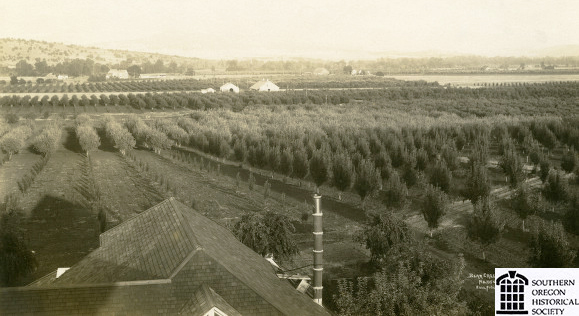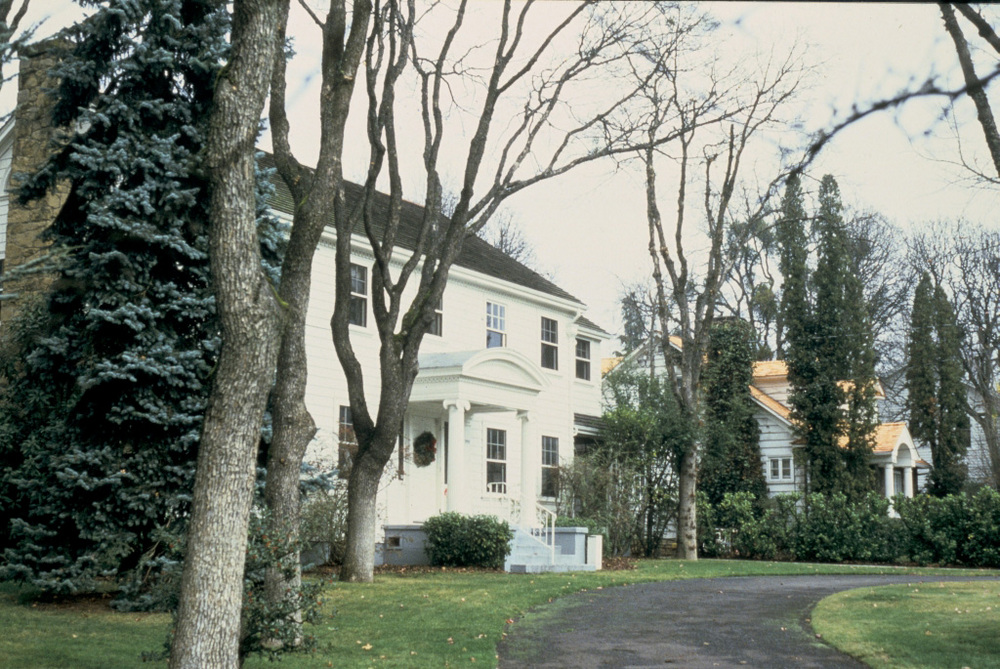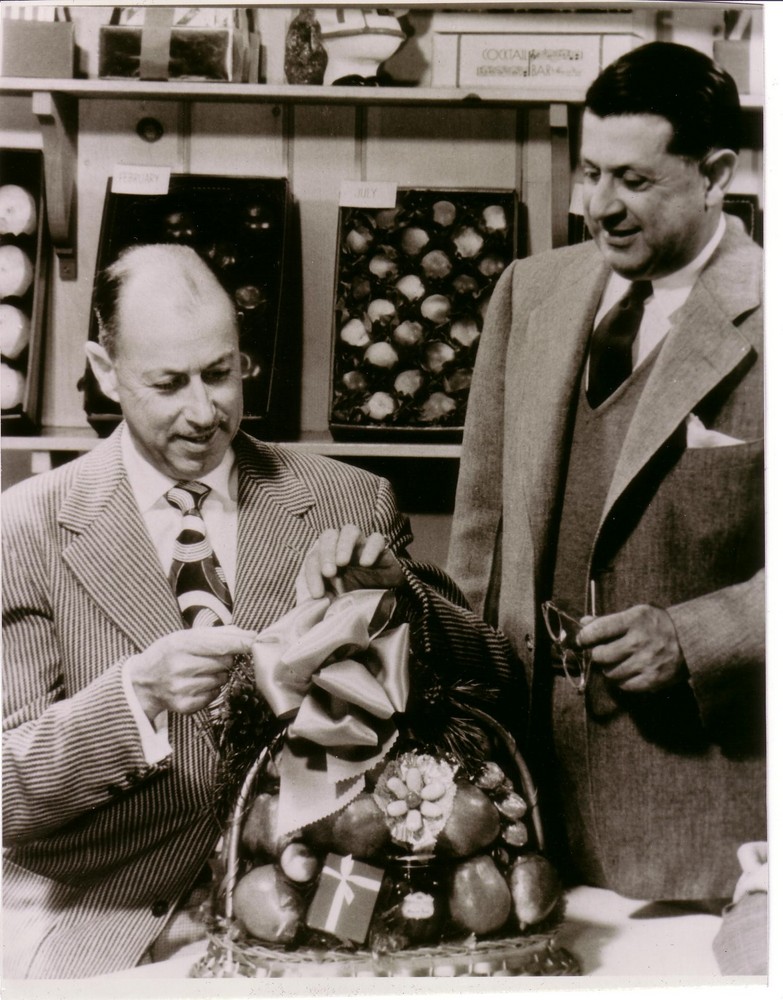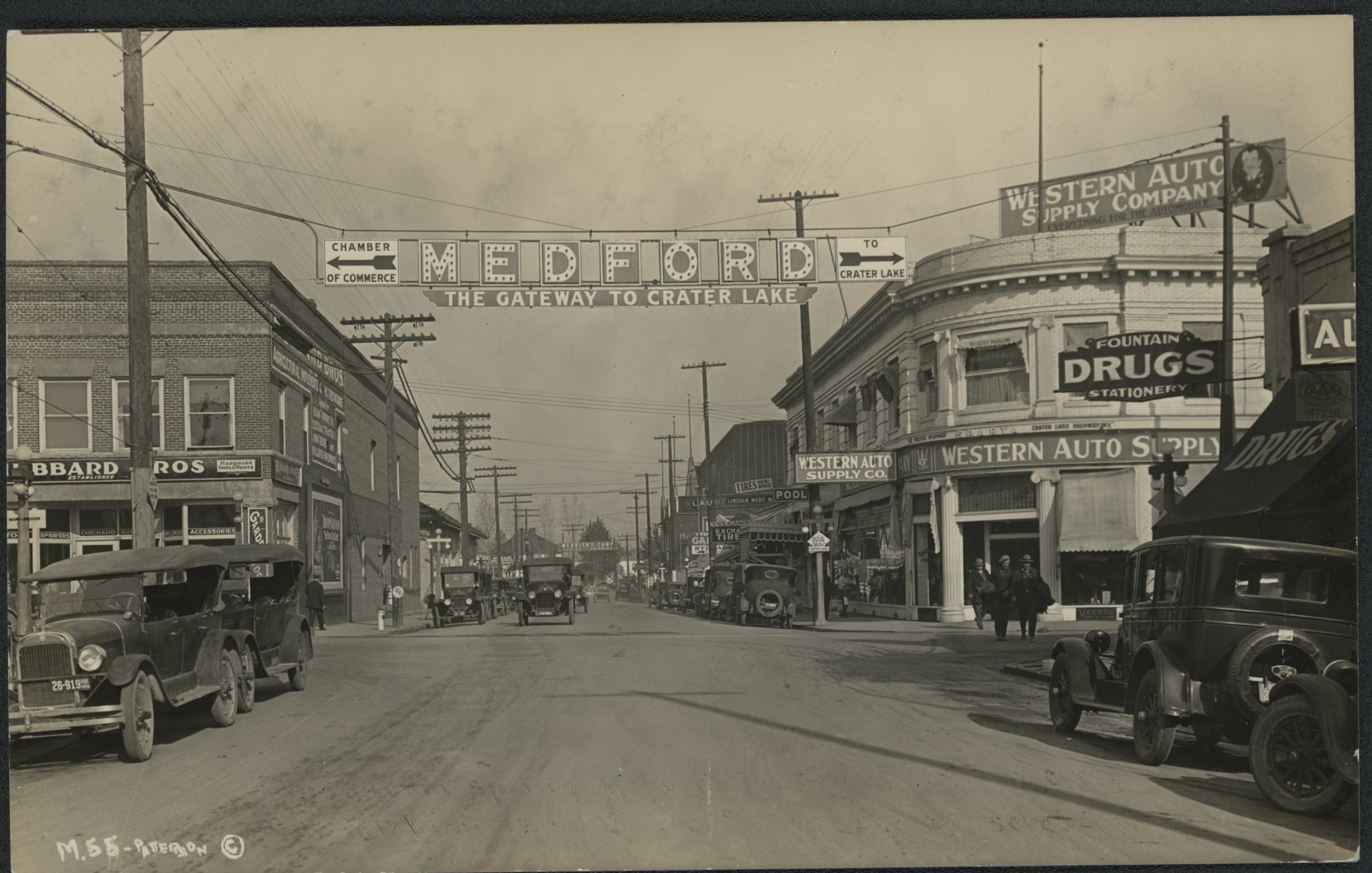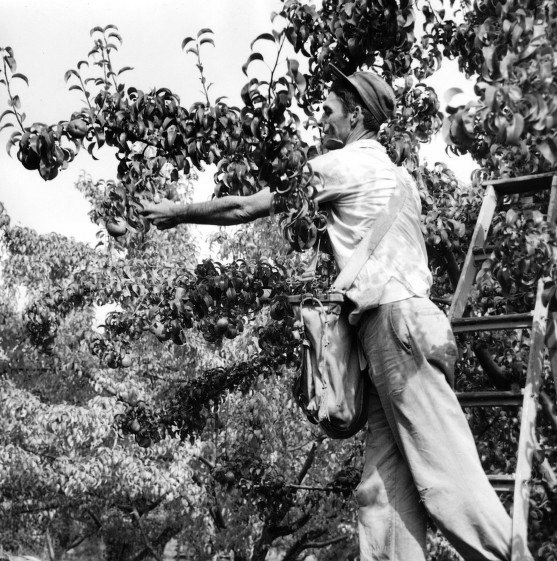Hillcrest Orchard has been the name of a farm on the slopes of Roxy Ann Peak in the Rogue River Valley since 1903. It was honored in 2008 as an Oregon Century Farm, a recognition that for a hundred years the property was continuously owned and worked as a farm by members of the same family.
The Rogue River Valley, an area noted for its lush, high grasses, is the homeland of the Takelma people. During the late 1840s, gold was discovered in the valley on tributaries of Bear Creek, and EuroAmerican miners rushed to the area. The Takelma resisted the occupation of their homeland, and the ensuing Rogue River War of 1855–1856 killed hundreds of Native people in the region. The Takelma were removed to the Grand Ronde Reservation in the Willamette Valley in 1856, and some families were taken to the Coast Reservation near Siletz in 1857. Immigrant miners and farmers took the land.
In 1853, Samuel Bowen had settled on the slope of Roxy Ann Peak, where he farmed wheat. By 1889, the property had come into the hands of William H. Stewart, who planted apple and pear trees. Stewart’s father, Joseph, is credited with planting one of the area’s first commercial orchards. By the first decades of the twentieth century, apple orchards rapidly transformed the valley’s landscape. In 1903, William Stewart sold his orchards to Julian W. Perkins, who named the farm Hillcrest.
The Hillcrest property was purchased by the newly formed Hillcrest Orchard Company of Seattle in 1908. Reginald H. Parsons, president of the company, was a successful entrepreneur and philanthropist who pursued a rapid improvement and expansion of the Hillcrest property. He also established a long-running tradition of having his family spend summers at the orchard. In 1917, Reginald and Maude Bemis Parsons moved into a large new residence on the property, designed by prominent Medford architect Frank C. Clark.
After World War I, the orchard at Hillcrest transitioned from apples to Rogue River Valley pears, largely a premium crop sold on the East Coast and in Europe. Parsons was also involved in the operation of the Pinnacle Packing Company and in improving the shipment and transport of the local fruit crop.
With the death of both Reginald and Maude Parsons in 1955, the management of Hillcrest fell to their children and grandchildren. The family corporation continued to operate the orchard of about 200 acres, and they planted their first vineyard of Merlot and Cabernet grapes in 1997. Some dozen varieties of grapes now occupy about 70 acres of the Hillcrest property. The Roxy Ann Winery opened in 2002, using both Hillcrest grapes and those of other local vineyards.
Over the decades, Hillcrest Orchard retained its family-oriented management and its agricultural mission. The farm is listed on the National Register of Historic Places, which notes not only the main residence and other structures designed by Frank C. Clark, but also buildings that predate it, including a 1911 garage built for an electric automobile and a barn built in about 1900 where Roxy Ann wines are sold.
-
![]()
Wagon hauling packed fruit from packing house to railroad, Hillcrest Orchard near Medford, Oregon.
Oregon Explorer, Oregon State University. Oregon Digital -
![]()
HIllcrest Orchard. Outbuildings (Medford, Oregon).
Building Oregon, University of Oregon. Oregon Digital. -
![]()
Reginald H. And Maude Parsons House, Hillcrest Orchard (Medford, Oregon).
Building Oregon, University of Oregon. Oregon Digital -
![]()
Hillcrest Orchard, Cow Barn (Medford, Oregon).
Building Oregon, University of Oregon. Oregon Digital. -
![]()
Packing House, Hillcrest Orchard (Medford, Oregon).
Building Oregon, University of Oregon. Oregon Digital. -
![]()
Hillcrest Orchard Office, Medford, 1900/1930.
Courtesy University of Oregon Libraries, Oregon SHPO
Related Entries
-
![Bear Creek Valley]()
Bear Creek Valley
Oregon has over ninety separate streams named Bear Creek (far more, in …
-
![Frank Chamberlin Clark (1872–1957)]()
Frank Chamberlin Clark (1872–1957)
Frank Clark practiced architecture for more than forty years in southwe…
-
Harry & David/Bear Creek Orchards
Harry & David, the marketing brand for Medford's Bear Creek Corporation…
-
![Medford]()
Medford
Medford, the county seat of Jackson County, was platted in 1883 in the …
-
![Oregon Century Farm & Ranch Program]()
Oregon Century Farm & Ranch Program
The Oregon Century Farm & Ranch Program was founded in 1958 to recogniz…
-
Pears and the pear industry
European pears (Pyrus communis) thrive in the temperate climate of the …
Related Historical Records
Map This on the Oregon History WayFinder
The Oregon History Wayfinder is an interactive map that identifies significant places, people, and events in Oregon history.
Further Reading
Hillcrest Orchard. Oregon Century Farm and Ranch Application. Oregon Century Farm and Ranch Program, Oregon State University. "CFR1127" Oregon Digital.









